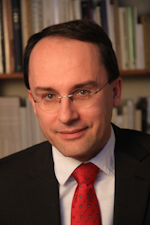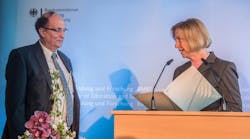In major initiative, Germany invests €350 million in microelectronics research

In its biggest research effort since reunification, the German government is funding non-university research on microelectronics to push strategic technology leadership. On April 4, the German Federal Ministry of Education and Research announced the major investment program for applied research in microelectronics. Approximately €400 million will be spent to establish a unique infrastructure under the brand Forschungsfabrik Mikroelektronik Deutschland (Research Factory Microelectronics Germany). A consortium of 13 non-university research institutions will receive €350 million now, while another €50 million will be given to academic research groups in 2018.
Within this cross-institutional research “factory” four so-called technology parks will be organized, focusing on topics important for the future: New silicon-based technologies for sensors and actors; semiconductors for energy-saving and communication technologies; new combinations of silicon with other semiconductors for the internet of things; and design and testing facilities.
On one hand the new program will provide easy access to high-tech semiconductor and microelectronics development facilities for small and medium enterprises. On the other, the money will be used to drive research in the involved institutions. The new collaboration unites a workforce of more than 2000 scientists and engineers, while another 500 jobs will be created over time.
The largest part of the money will go to 11 institutes of the Fraunhofer Society. Over the past 20 years they have formed the Fraunhofer Group Microelectronics, which sees itself as Europe’s largest provider for smart systems R&D.
Targeting integrated terahertz devices
The research factory is a joint initiative of the Fraunhofer and Leibniz institutes and aimed at strengthening the position of the European semiconductor and electronics industry. The head office will be located in Berlin.
The Ferdinand-Braun-Institut, Leibniz-Institut fuer Hoechstfrequenztechnik (FBH) is among the four funded institutions in the Berlin and Brandenburg region. The institute’s director Günther Tränkle says “We want to work on new integrated structures for electronics far beyond 100 Gigahertz. That’s highly interesting for telecommunications but also for all the fields of Terahertz applications.”Terahertz radiation has many applications ranging from spectroscopy to detecting defects in tablet coatings and airplane structures, concealed weapons, and cancer.

Andreas Thoss | Contributing Editor, Germany
Andreas Thoss is the Managing Director of THOSS Media (Berlin) and has many years of experience in photonics-related research, publishing, marketing, and public relations. He worked with John Wiley & Sons until 2010, when he founded THOSS Media. In 2012, he founded the scientific journal Advanced Optical Technologies. His university research focused on ultrashort and ultra-intense laser pulses, and he holds several patents.
